Table of Contents
Specifications
| Manufacturer | Clean-tech |
| Model | Clean-tech |
| Dimensions (inches / cm) | 7.87 x 7.87 x 16.5 inches (19.9 x 19.9 x 41.9 cm) |
| Weight (pounds / kg) | 8.25 lb (3,7 kg) |
| Filtration Technology | UV-C Light and H11 HEPA Filter |
| Filter Life | 6-12 months |
| Coverage (4.8 ACH) | 200 sq. ft. (18.5 m²) |
| Number of Fan Speeds | 2 – Speed MIN, and Speed MAX |
| Noise Level (low – high) | 53.6 – 60.7 dBA |
| Efficiency Test | 76% in a 194 sq. ft. room |
| Power Consumption | 36W |
| Warranty | 1-year |
Full Review
CleanTech is one of the newly formed companies dedicated to the production of air purifiers. Their earliest invention is the Clean-Tech Medical Grade UVC Air Purifier that uses two-stage filtration, an H11 HEPA filter, and UV-C light. While the main focus of this device is on filtering the air with UV-C, the main idea of the Clean-tech is to disinfect the air around you while you are there.
UV is a technology used in healthcare, medicine, and similar fields where bacteria’s practical and fast killing is needed. Clean-tech has been successfully funded on Indiegogo, with thousands of users backing the project and purchasing the product.
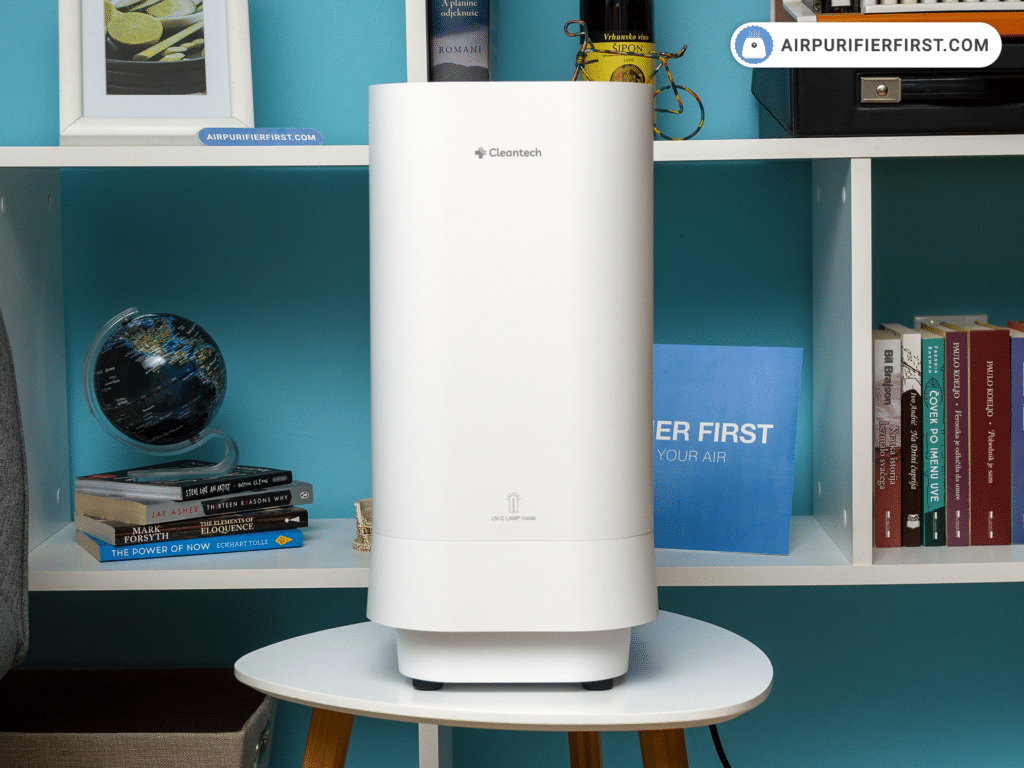
Though it lacks advanced and optional features and has only two fan speed options, it is a pretty straightforward device for use. Besides, the Clean-tech is designed for spaces up to 200 sq. ft., and the independent lab tests show a 99.99% virus and bacteria removal rate (P.S. it showed much lower performance in my tests), but like all air purifiers before.
They started their campaign on the Indiegogo site. In order to support them and help as many people as possible who would buy this product, I decided to test it, so below you can see how the innovative Clean-Tech Medical Grade UVC Air Purifier proved in the tests I subjected it to, and whether it successfully passed.
Design
Clean-tech is similar to many other air purifiers on the market. There is nothing that stands out when it comes to aesthetics. It is entirely painted white, with air inlets and an H11 filter on the underside all the way down.
In terms of size, in general, the device is very small, mobile, and easy to carry. However, it would be good to have handles or slots for carrying.
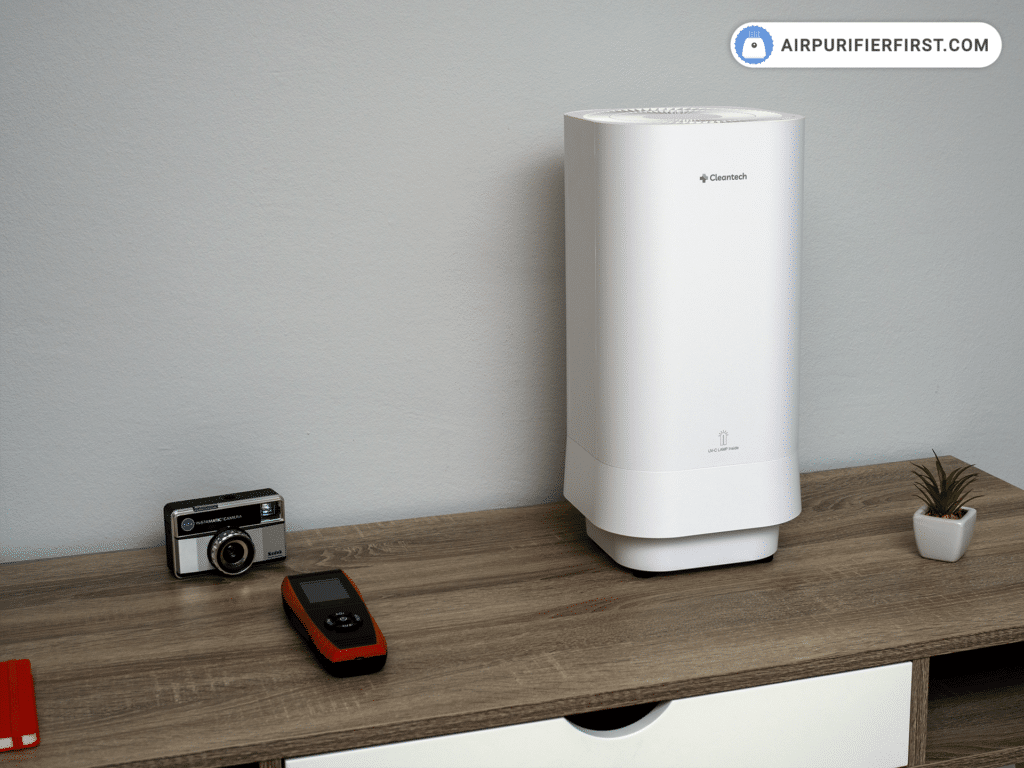
There is a HEPA filter cover at the bottom, but the difference with other similar devices is that this cover is screwed on, requiring a slightly more complicated procedure to remove it.
I don’t like the Clean-tech build quality; I think a device in this price range should be much better and of higher quality. The plastic is not top quality. The device’s interior is fragile; after some time, something has broken off in the device, and I hear the knocking when I pick it up and try to move it.
Device Control
Clean-tech does not have an advanced option, which makes controlling the device altogether easier. The device is controlled by a button on the top. The button is used to switch the device on or off and to switch fan speed.
The button responds to pressure (it does not seem like a touch button). Sometimes it does not respond correctly, so I suggest pressing it harder. To the left and right of the button are indicators to show which fan speed is currently active.
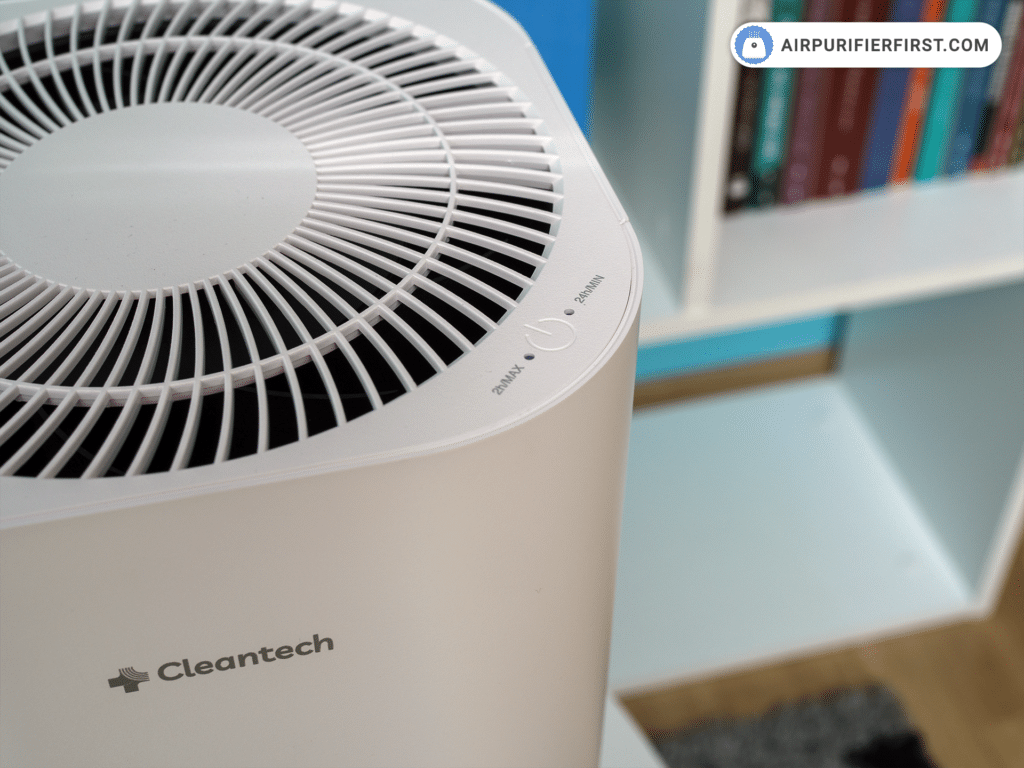
When you switch on MAX mode, the machine will run at maximum speed for 2 hours and then automatically switch to standby mode. I do not like the fact that the device cannot be left at full speed all the time. However, if the mode is in MIN mode, the air purifier will run until you turn it off. The difference is that MIN mode is 50% weaker than MAX mode.
It’s a pity that Clean-tech doesn’t have advanced options such as auto mode, smart sensors, or a timer, which would greatly help.
Airflow
Clean-tech is designed so that air enters through the vents on the underside. The air is then filtered through an H11 HEPA filter and a UV-C filtration process. Finally, clean, filtered air exits through the grilles at the top of the unit.
Size and Dimensions
The air purifier weighs 9 lb. The dimensions of the device are 7.87 x 7.87 x 16.5 inches.
What’s in the box?
When you buy the device, you get an air purifier with Clean technology, a power cord, a pre-installed UV-C lamp, an H11 HEPA filter, and a user manual.
The Clean-tech requires no special preparation; the device is ready to go. All you need to do is place it in the desired location, at least 20 cm away from other objects, plug it in, and switch it on.
However, as the Clean-tech draws air from below, it is essential to place the device on a hard surface and never on a carpet or other similar material.
Filtration Technology
The most significant difference between Clean-tech and other air purifiers on the market is the difference in the filtration process. The Clean-tech air purifier uses two-stage filtration, consisting of H11 HEPA filters and UV-C light. Clean-tech focuses on UV-C filtration as the primary filtration stage.
The UV-C light is a medical-grade light installed in the unit, just above the H11 HEPA filter. Also unique to Clean-tech is the idea that the device kills bacteria and viruses instead of trapping them in the HEPA filter, as many other air purifiers do.
H11 HEPA filter
The first stage of filtration in the Clean-tech air purifier is the H11 HEPA filter. Basically, its primary purpose is to make the job of UV-C light easier by capturing larger particles and transferring only the smaller ones to UV-C light.
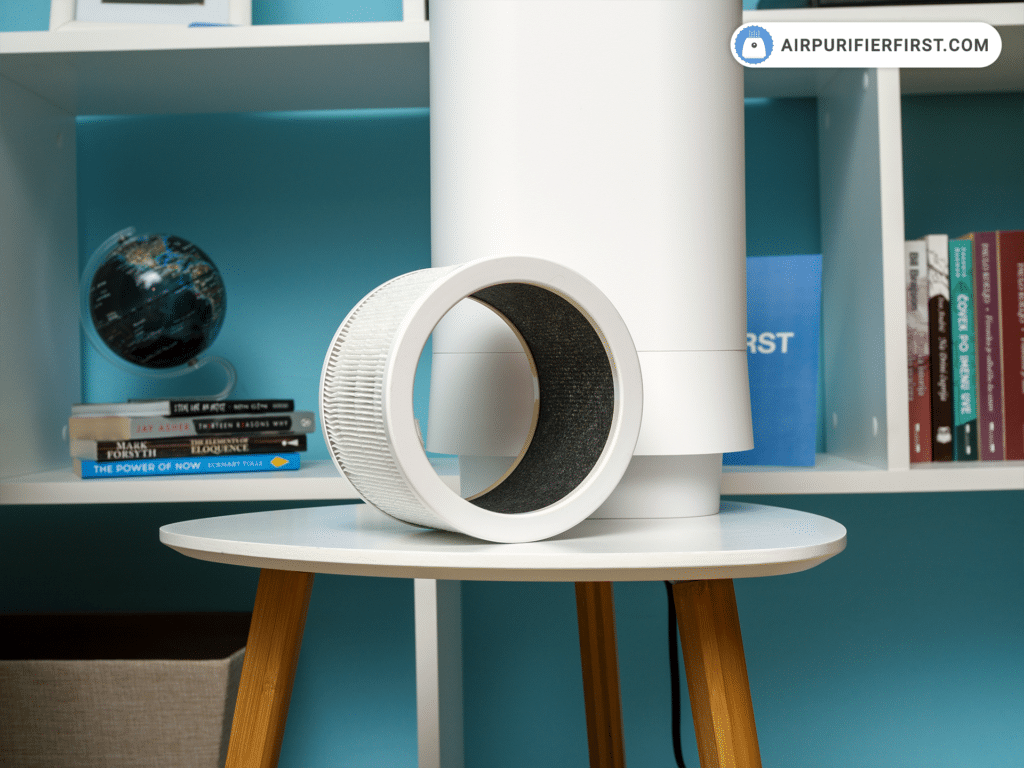
The H11 HEPA filter is several times less efficient than the True HEPA filters we see in many air purifier brands. The HEPA filter is not washable; it should be replaced when it gets dirty. The filter replacement period is on average 6-12 months. It all depends on the air quality in the room where you use the air purifier and how well you maintain the filter.
If you want to know the difference between various HEPA filters, I strongly recommend reading my detailed explanation of what an HEPA filter is.
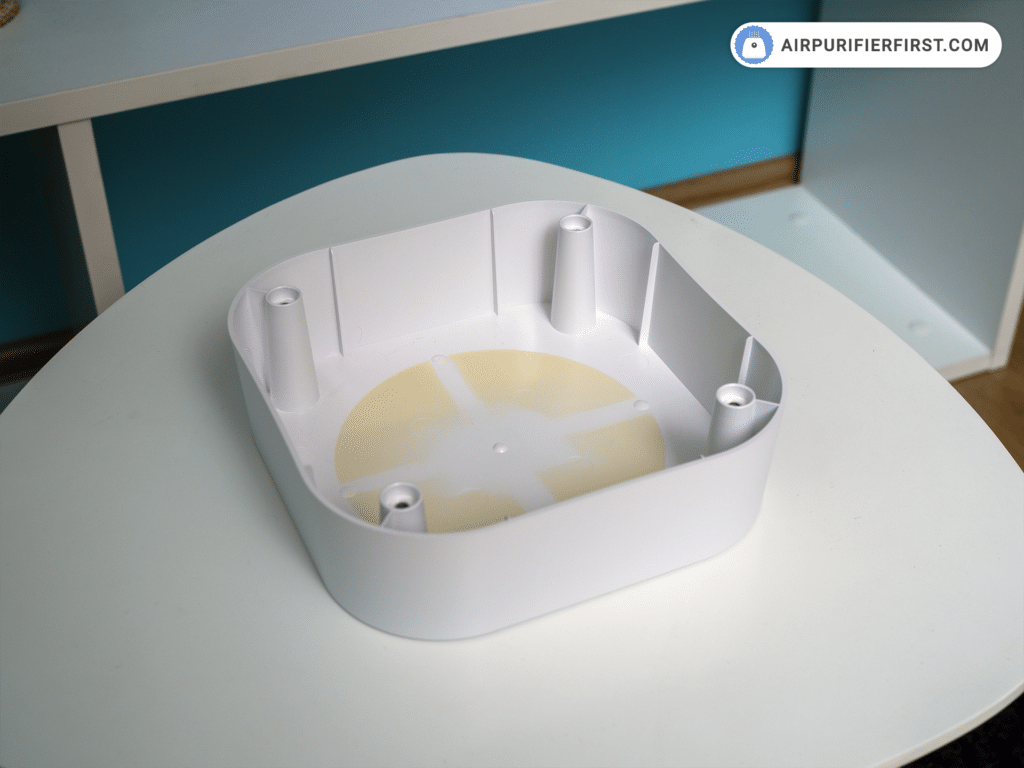
Do not be alarmed if the plastic on the inside of the HEPA filter turns yellow over time; this is purely due to exposure to a large amount of UV-C light and does not affect the filtration in any way.
Currently, I have not found a place where you can buy a replacement HEPA filter for the Clean-tech, so it is essential to consider this before purchasing the device.
UV-C light
As I mentioned earlier, UV-C filtering makes Clean-tech innovative and different from most other air purifiers on the market. UV-C light falls in the light spectrum just before visible light. UV-C light is commonly used in medical environments and kills bacteria and allergens on a molecular level instead of trapping them in the filter.
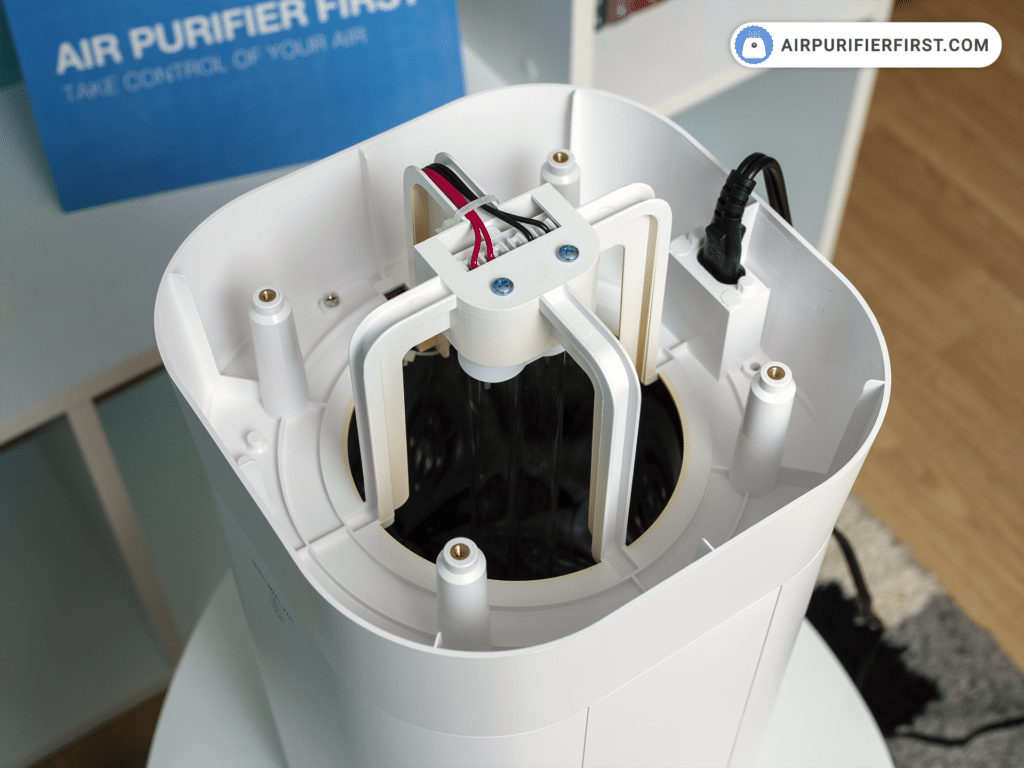
Clean-tech uses a 24W 254nm UV-C germicidal lamp that is mounted inside the device. The UV-C lamp occupies about 75% of the surface of the device; the rest is the HEPA filter and motor.
The UV-C light reflects off the mirror surface and can sanitize even more bacteria and viruses from the air. For every compliment, the UV-C (24W) light intensity is several times greater than that of competing air purifiers.
In addition to the Clean-tech, I had the opportunity to test the GermGuardian AC4825, which uses incomparably weaker UV-C light with an output of only 5W.
The UV-C light is challenging to change and requires a particular procedure, but the good thing is that this light lasts on average 2 years (18,000 hours), meaning it does not need to be changed very often.
UV-C light reflects on the floor of the device, but according to Clean-tech, it is not harmful and can in no way harm you.
Noise Test
As far as the noise level produced by Clean-tech is concerned, I don’t have much to say. Clean-tech only uses two speeds to work, so the volume it makes is not varied, and you don’t have much choice but to get used to the sound of one speed or the other.
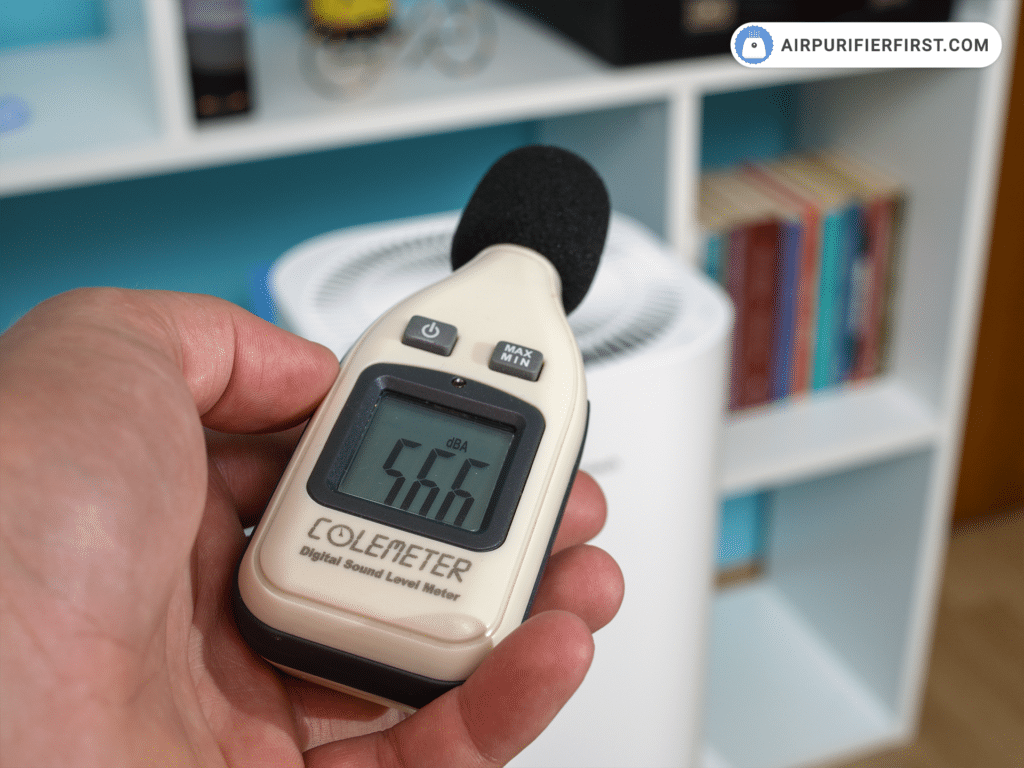
I think the volume in MIN mode could be a little quieter, especially when compared with other competing devices. At this speed, the Clean-tech produces a sound of 53.6 dBA. This problem could be solved very easily if the device had a sleep mode, reducing the volume.
In MAX mode, the volume is even higher than at first speed, so the Clean-tech produces a sound of around 60.7 dBA in this mode.
| Speed | Value (dBA) |
|---|---|
| Speed MIN | 53.6 dBA |
| Speed MAX | 60.7 dBA |
Performance Tests
Clean-tech is an air purifier designed for rooms up to 200 sq. ft. Accordingly, I have tested the device in the intended rooms. The tests are identical to other air purifiers I have tested so far, mainly to better and more accurately compare the performance of the different devices and suggest the best air purifier to buy.
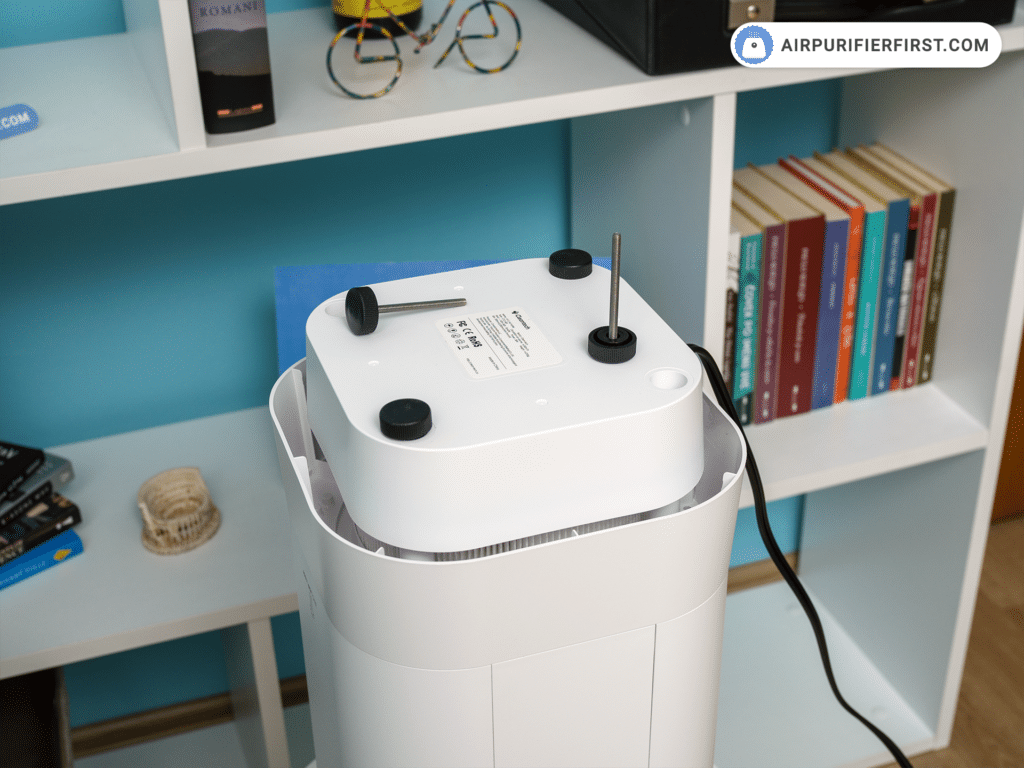
Clean-tech’s demonstration website contains information on third-party tests that guarantee the outstanding performance of this device. However, the results of the tests I have carried out are somewhat different and not as impressive as they first appear. The third-party tests confirm that Clean-tech successfully kills the H1N1 virus, as well as Staphylococcus albus and E. coli.
An essential difference in testing is how the device works. Clean-tech kills bacteria and viruses, which is much slower than the conventional particle traps in HEPA and similar filters. Without further ado, here’s how Clean-tech did in my tests.
194 sq. ft. Room Test
I tested Clean-tech in a 194 sq. ft. room. The machine was running at maximum speed at all times. I put it in the room, measured the current air quality, and left it running for a while. After 60 minutes of operation, Clean-tech improved the air quality by about 76%.
| # | Starting Baseline | After 60min |
|---|---|---|
| PM 2.5 | 92.1 | 22.5 |
| PM 10 | 129 | 31.6 |
| Particles | 133659 | 32747 |
| AQI | 121 | 29 |
Given that the room is slightly smaller than the recommended dimensions, according to the demonstration website’s information, I am a little disappointed with this result. However, it should be borne in mind that the Clean-tech kills bacteria, viruses, and other germs from the air for good.
320 sq. ft. Room Tests
In another room measuring 320 sq. ft., which is much larger than the recommended dimensions, I tested the Clean-tech following the same principle. After 60 minutes of operation, the device improved the air quality by only 45% at maximum speed. I was further disappointed by this inferior result, so I left the Clean-tech running for another 60 minutes.
After that, the device improved the air quality further. In a total of 120 minutes, the air quality had risen to a much better 67%.
| # | Starting Baseline | After 60min |
|---|---|---|
| PM 2.5 | 78.9 | 43.1 |
| PM 10 | 110.5 | 60.4 |
| Particles | 114463 | 62616 |
| AQI | 104 | 57 |
The bottom line is that Clean-tech could do very well, but it takes a lot of time, and this UV-C light technology is good but “slow.”
I think a better and higher quality HEPA filter would add a lot to the quality of filtration.
Operating Costs
Clean-tech is a 36W air purifier. This is not much, especially considering that the UV-C light alone is 24W. I do not think that 36W is sufficient for such a device. A slightly more powerful motor would contribute to better performance. The ability to run at more speeds and modes is also required.
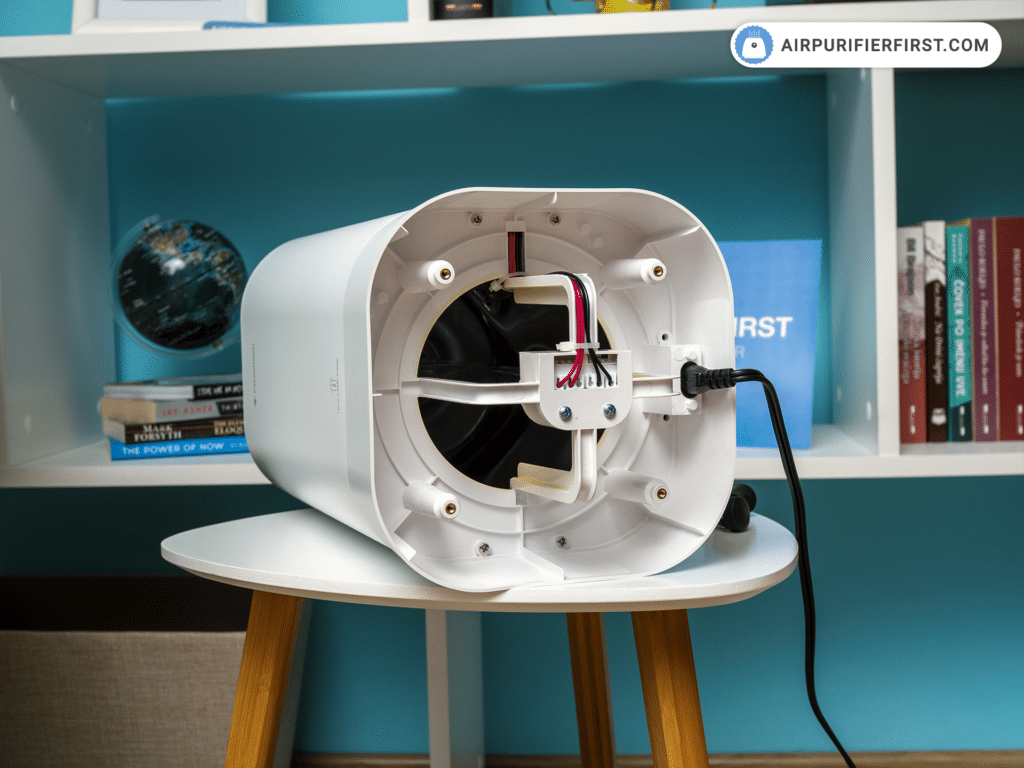
If you were to leave the Clean-tech running at maximum speed for one month, 24 hours a day, your electricity bill would increase by approximately 3.65$. Note that this scenario is impossible, as you can’t leave Clean-tech running at maximum speed for 24 hours a day.
The device switches off in this mode after only 2 hours and switches to standby mode.
| Speed | Power Usage (W) |
|---|---|
| Stand-by | 0.8W |
| Speed MIN | 37.6W |
| Speed MAX | 41.6W |
As Clean-tech still does not offer a replacement filter and UV-C light, I cannot say for sure what the maintenance costs are and whether or not the Clean-tech is affordable to maintain.
Customer Support and Warranty
Suppose you have been following the Clean-tech campaign on Indiegogo. In that case, you might have noticed a lot of dissatisfied users and criticism on the Clean-tech customer support page. That’s also why I always test customer support, so I did it again this time. I contacted the Clean-tech team several times by email, and I can confirm the slowness in response, which took 10 days to respond to a message.
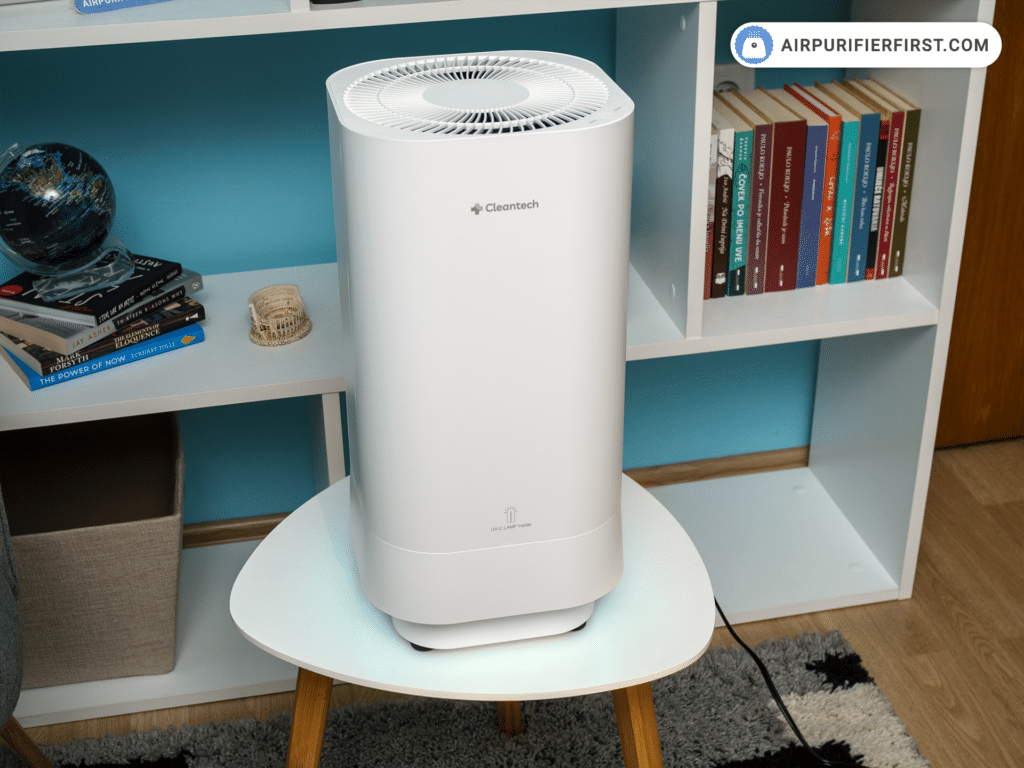
Clean-tech has a 12-month warranty, and you can return the product within 7 days, but only if you buy it directly from the Clean-tech website or via Indiegogo. If you buy the product on Amazon, Amazon’s return policy applies. Therefore, if you decide to buy a Clean-tech air purifier, my strong recommendation is to do it on Amazon.
FAQ on Clean-tech Air Purifier
Is the HEPA filter in the Clean-tech air purifier washable?
No, the HEPA filter should be replaced between 6 and 12 months on average.
How often should the UV-C light be replaced?
On average, the UV-C light should be replaced every two years.
What is the Clean-tech warranty?
Clean-tech has a 12-month warranty.
Does Clean-tech produce ozone?
Clean-tech uses a UV-C light that does not produce ozone, which means there is no ozone production.
Leave a Reply